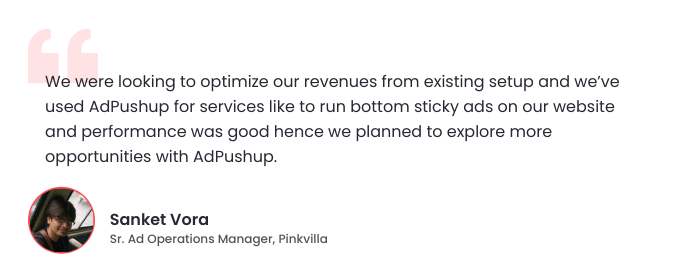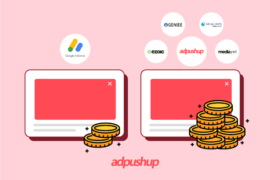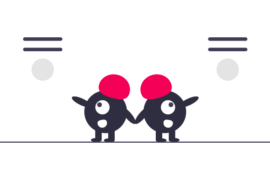Most publishers make little effort to optimize AdSense once they’ve initially set it up, learn how you can tweak your ads for generating higher revenue.
AdSense is the most popular ad network on the planet and for good reason: It’s technologically robust, has a great pool of advertisers, and is absolutely free. No wonder so many publisher sign up for it.
Unfortunately, for most, it ends right there — a vast majority of publishers make little effort to optimize AdSense once they’ve initially set it up with one or two ads units randomly placed anywhere on their website. This is a cause for concern because the lack of ad optimization equates to a direct loss of potential revenue. But wait, what is ad optimization anyway? Glad you asked.
What is ad optimization?
Optimization simply means taking the necessary steps to ensure that you’re making the most of your ad inventory by maximizing revenue while at the same time providing an optimum user experience to your visitors.
Why optimize ads?
Optimizing your ads is crucial when it comes to meeting your business goals whether that may be increasing your overall ad revenue, improving the usability of your website, increasing the visibility of your ads, or any other specific goal that you may have.
- Test different ad styles
Choosing the right ad style for your text ad units helps improve the visibility of your ads and reduce the effect of banner blindness wherein users just skip right over your ads. There are three main recommended strategies to style your ads:
To blend ads, make the background and border color of your ads match the background of the web page. This works well with pages with a white background.
To complement ads, use colors that already exist on your site, but don’t match the background and borders exactly where the ads are placed.
To contrast ads, choose colors that stand out against the background color of the webpage. This style is best suited for dark pages as it makes the ads more visible. - Test different ad sizes
While we are big advocates of meticulously testing the size, color, and placement of your ads to figure out the setup that works best for you… there are some form factors that almost always outperform others.
As a general rule, wide ads tend to perform better than tall ads. This is because readers consume information in “thought units”, i.e., several words at a time. Tall ad units break the flow of reading as the user has to move to the next line to read the complete text, this gives wide units an inherent advantage when it comes to conversion rates.
Based on extensive user interaction date, Google has found that the most effective sizes for ad units are the 336×280 large rectangle, the 300×250 medium rectangle, the 728×90 leaderboard, the 300×600 half page, and on mobile the 320×100 large mobile banner.
Tip: Last year, AdSense launched two new ad sizes, which are 970 x 250 Billboard and the 300 x 1050 Portrait. You should give these two a run because apart from the new bigger creatives that are especially designed for them, they also possess the ability to run text ads and smaller display ads within their larger frames — thereby increasing ad competition and increasing your revenue potential. - Test different ad placements
Apart from ad styles and ad sizes, the placement or location of ads is another factor that can have a huge impact on your overall revenue numbers.
The first step to understanding the best location for placing your ads is to figure out where your users are spending a majority of their time on your website. You can get some actionable user behavior data on this if you link your Google AdSense account to your Google Analytics account.
Another important thing to note is that an ad setup that may work for an online technology magazine may for work as well for, let’s say, a blog about football. Similarly, just because a particular ad setup is working great on your homepage doesn’t mean that it’s the best setup for individual web pages too.
The two areas where you’ll be placing ads are “above the fold”, i.e., the part of a web page that a user can see without scrolling, and “below the fold”, i.e., the part of a web page that a user has to scroll down to access.
Diving further down, you’ll typically be looking at placing ads in the header, sidebar, inside the content, or under the content. The only way to find out what works best is to set up ads once, rotate them, and then measure the performance of one configuration against the other. - Deploy multiple ad units
Whenever possible, you should opt to display more than one ad unit on your web pages as this increases the probability of the user clicking on at least one of them.
According to Google policies, you can put up to three standard AdSense for content ad units, three link units, and two AdSense for search boxes on each page of your site.
Maximizing ad coverage in this manner is especially beneficial to website owners whose web pages tend to be longer than usual and require a fair bit of scrolling, giving the ad network the opportunity to serve more than the one targeted ad to the user on the page. - Use link units for small spaces
Link units work a little differently from content ad units; they display a list of topics relevant to the content on your site, when a user clicks on a link unit — they are taken to a results page where they multiple ads from advertisers, payout happens if the user ends up clicking on any of these ads.
Although it’s a slightly more roundabout way of generating revenue, it’s a great option when space is at a premium because link units take the least amount of space compared to any other type of ad unit.
They are also pretty distinctive and thus more likely to evoke action from the user. Three-link units are allowed by Google and you should make full use of them by placing them in unusual and interesting locations throughout your website. - Show both text and display ads
In Google AdSense, you have the option to display only text ads, only display ads, and both text and display ads.
Google strongly recommends that you allow the network to show both text and display ads as a means to maximize your revenue potential. The reason behind why this works is simple: Each ad, whether text or display, participates in a bidding war to claim your ad inventory, and the ad space goes to the highest bidder.
If you disable the serving of either text or display ads, you effectively wipe out roughly half of the advertisers bidding for space — resulting in significantly lower revenue yields than what might have been possible with both options enabled. - Don’t filter ads too much
AdSense allows publishers to filter ads by URL or categories. This is helpful in case there’s a conflict of interest or if the publisher does not, for any reason, wish to display a particular creative or ads from a specific advertiser.
Although AdSense allows publishers to filter up to 200 different websites, it’s advisable to keep this list down to the minimum amount possible because reducing the number of ads that can bid for your ad space equates to a potential loss in earnings.
Filter only that what you absolutely must and let the rest run. - Use pagination for content
Since AdSense doesn’t allow auto ad refreshing (it has to be user-initiated, when anyone rarely does), publishers are left to their own devices when it comes to making the most of new and existing content.
If your text posts tend to run long, a great idea is to setup pagination so that the user can view the next page by clicking on a link. If your website runs on a content management system like WordPress, you can just install a plugin to enable pagination.
This has two benefits: From the user’s perspective, it eliminates the need for endless scrolling and breaks down the post into manageable chunks more suited for consumption; from an ad optimization perspective, this is effective because a new set of ads is served each time the page is refreshed — leading to a direct jump in revenue from CPM ads and an increased probability of click on a CPC ad. - A/B test your ad units regularly
With so many different ad styles, sizes, and locations… it can be difficult to determine which exact combination is the right one for your website and its users. A/B testing is a method that allows you to eliminate the guesswork from this and give you actual data that you can rely on to make a decision.
The A and B in A/B testing as simply indicators for two different scenarios that you would like to test out. For instance, you might want to test whether a text ad unit performs better with green as its background color or blue. Using A/B testing, you can set up an experiment, wait for a data, and conclusively know which color works better.
In Google AdSense, you can conduct A/B testing by defining your own testing parameters in the “Experiments” tab. Within the test, you also have the option of selecting how to split the traffic between the test variants, although it is advised that you let AdSense take care of that on its own. - Automate your ad testing
As great as A/B testing is, it can get cumbersome real quick when you need to go beyond testing multiple parameters instead of just testing one ad variant against another.
Taking the example mentioned above, if you need to test the performance of a text ad unit based on its background color being green or blue — that’s a simple enough test that you can just setup once and wait for the result to come rolling in.
Now imagine a scenario where you need to test out three different ad units for multiple ad styles, ad sizes, and ad locations, and you can begin to grasp the complexity you will encounter in manually running such a test simply because of the permutations and combinations of ad configurations involved.
This is where automated testing comes in. We envisioned and created AdPushup as a tool that helps publishers automate this entire process and run these tests on autopilot based on machine learning algorithms with minimal human intervention.
Once the initial condition is set, our tool automatically starts serving different ad variations, measures the performance for each one of them, and intelligently splits and drives the bulk of the traffic towards the winning variant — ensuring that the publisher’s ad inventory is always in optimum use.
We’re currently in public beta and you can sign up for an invite here.

FAQs
Digital ad optimization involves improving the performance of a digital ad campaign using data.
In order to optimize your ads, you should create multi-channel campaigns, align your campaign with your customer’s buying journey, use engaging media throughout your campaign, and track results.
Optimization aims to achieve the “best” design based on a prioritized set of criteria. Factors such as productivity, strength, reliability, longevity, efficiency, and utilization should be maximized.

Shubham is a digital marketer with rich experience working in the advertisement technology industry. He has vast experience in the programmatic industry, driving business strategy and scaling functions including but not limited to growth and marketing, Operations, process optimization, and Sales.








